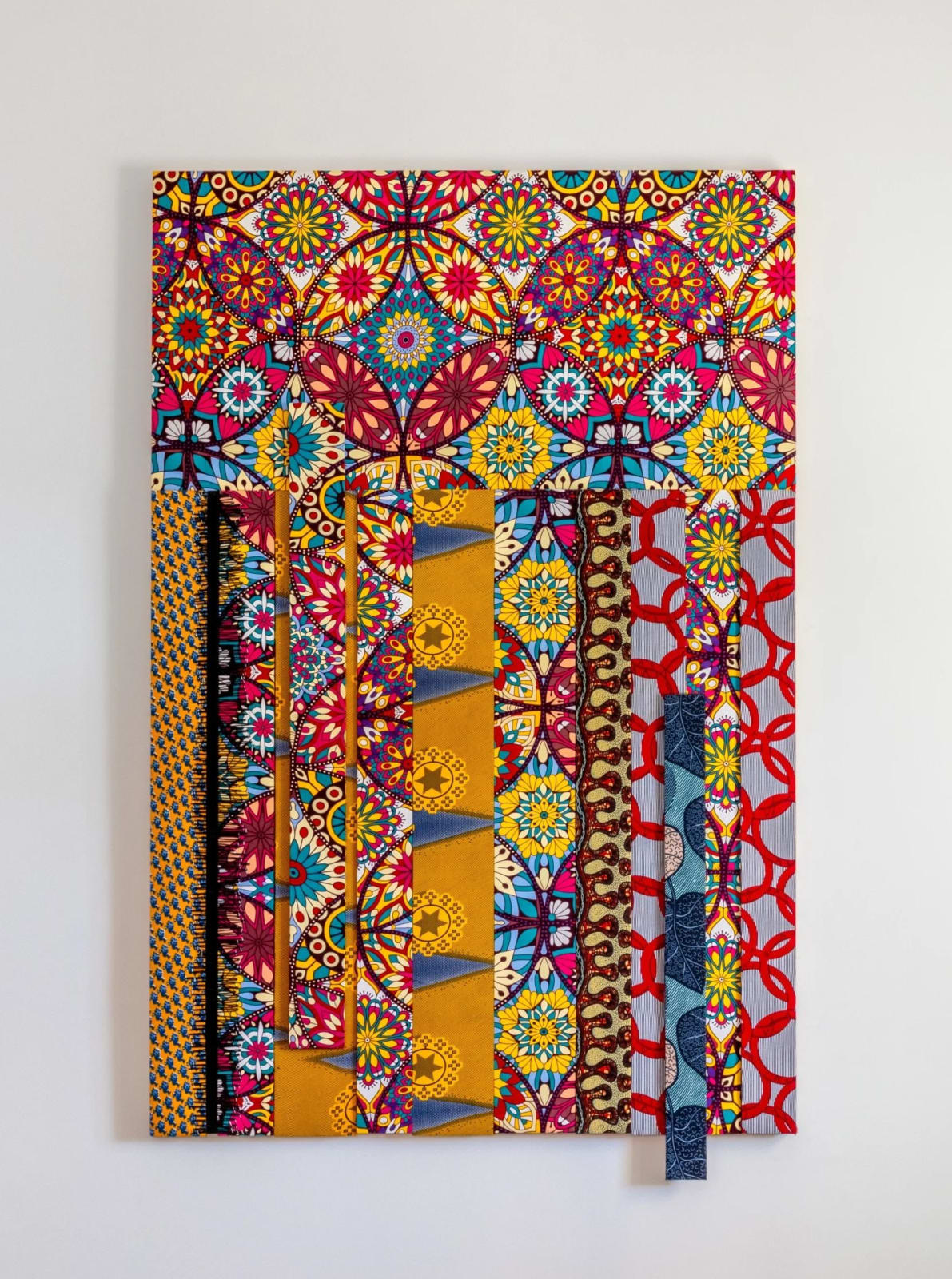-
Artworks



Ibrahim Mahama
Untitled, 2022Wood, textile4x123x192Copyright The ArtistFurther images
The collaged sections of material in this body of work have been collected by Ibrahim Mahama over several years, through a process of exchanging new cloth for old from traders,...The collaged sections of material in this body of work have been collected by Ibrahim Mahama over several years, through a process of exchanging new cloth for old from traders, mainly women, working in markets across Ghana. Known as ‘Dutch wax’ cloth, these densely patterned, colourful cotton fabrics were originally made and traded by Dutch companies operating along the coastal routes around West Africa in the 19th century. Developed for export to the Dutch East Indian colonies, the fabrics, which incorporated traditional Indonesian batik design, were mass produced at a cheaper cost than authentic batik cloth; however, these products were shunned by customers in South East Asia, which led Dutch sellers to seek alternative markets. Stopping off for refuelling in West African port cities such as Accra, the Dutch trading vessels found a market for the imitation batik, which was soon modified to include African-inspired designs. Dutch wax cloth eventually became synonymous with African design and culture, often as a non-verbal means of communication within everyday wear, or to denote wealth, power, or influence in formal settings.





